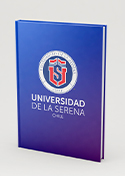CEERS Key Paper. III. The Diversity of Galaxy Structure and Morphology at z=3-9 with JWST
Abstract
We present a comprehensive analysis of the evolution of the morphological and structural properties of a large sample of galaxies at z = 3-9 using early James Webb Space Telescope (JWST) CEERS NIRCam observations. Our sample consists of 850 galaxies at z > 3 detected in both Hubble Space Telescope (HST)/WFC3 and CEERS JWST/NIRCam images, enabling a comparison of HST and JWST morphologies. We conduct a set of visual classifications, with each galaxy in the sample classified three times. We also measure quantitative morphologies across all NIRCam filters. We find that galaxies at z > 3 have a wide diversity of morphologies. Galaxies with disks make up 60% of galaxies at z = 3, and this fraction drops to similar to 30% at z = 6-9, while galaxies with spheroids make up similar to 30%-40% across the redshift range, and pure spheroids with no evidence for disks or irregular features make up similar to 20%. The fraction of galaxies with irregular features is roughly constant at all redshifts (similar to 40%-50%), while those that are purely irregular increases from similar to 12% to similar to 20% at z > 4.5. We note that these are apparent fractions, as many observational effects impact the visibility of morphological features at high redshift. On average, Spheroid-only galaxies have a higher Sersic index, smaller size, and higher axis ratio than disk or irregular galaxies. Across all redshifts, smaller spheroid and disk galaxies tend to be rounder. Overall, these trends suggest that galaxies with established disks and spheroids exist across the full redshift range of this study, and further work with large samples at higher redshift is needed to quantify when these features first formed.
Description
Keywords
STAR-FORMING GALAXIES, ILLUSTRISTNG SIMULATIONS, DEEP-FIELD, MULTIWAVELENGTH MEASUREMENT, SEMIANALYTIC FORECASTS, LIGHT-CONES, EVOLUTION, CANDELS, REDSHIFT, STELLAR
